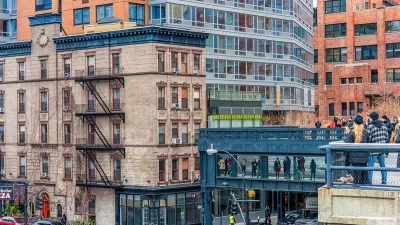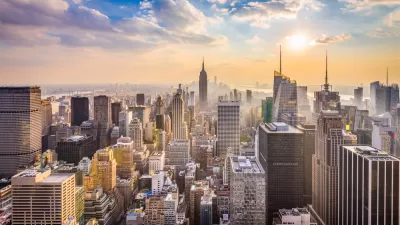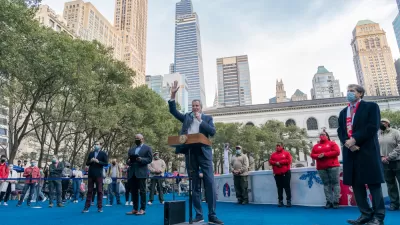With travel restrictions requiring quarantines for many out-of-state visitors to New York City, the normal hordes of tourists on New York's High Line will be absent for months to come.

Washington Post columnist Adrian Higgins checks in the with the High Line in New York City, which has been vacated during the pandemic much like it was before its famous adaptive reuse and evolution into a tourism magnet and a controversial symbol of gentrification.
Now, with the city taking tentative steps to reopen and travel restrictions into New York in place, the High Line is likely to evolve again. Higgins writes:
In the interval between limited reopening and a world back to normal, whenever that may be, the High Line will become something closer to its original idea, a quirky postindustrial gift to the West Side. It may become for New Yorkers what the cultural treasures of Florence and Venice are now for their citizens: havens devoid of the hordes of out-of-towners.
According to Higgins, the Friends of the High Line is actively discussing how to implement and enforce social distancing on the eight-foot wide path, but no decisions have been made yet. It also "may take years for New York to return to the level of tourism — some 65 million visitors a year — it attained before the coronavirus crisis," according to Higgins.
FULL STORY: The High Line has been sidelined. When it reopens, New Yorkers may get the park they always wanted.

Alabama: Trump Terminates Settlements for Black Communities Harmed By Raw Sewage
Trump deemed the landmark civil rights agreement “illegal DEI and environmental justice policy.”

Planetizen Federal Action Tracker
A weekly monitor of how Trump’s orders and actions are impacting planners and planning in America.

How Atlanta Built 7,000 Housing Units in 3 Years
The city’s comprehensive, neighborhood-focused housing strategy focuses on identifying properties and land that can be repurposed for housing and encouraging development in underserved neighborhoods.

In Both Crashes and Crime, Public Transportation is Far Safer than Driving
Contrary to popular assumptions, public transportation has far lower crash and crime rates than automobile travel. For safer communities, improve and encourage transit travel.

Report: Zoning Reforms Should Complement Nashville’s Ambitious Transit Plan
Without reform, restrictive zoning codes will limit the impact of the city’s planned transit expansion and could exclude some of the residents who depend on transit the most.

Judge Orders Release of Frozen IRA, IIJA Funding
The decision is a victory for environmental groups who charged that freezing funds for critical infrastructure and disaster response programs caused “real and irreparable harm” to communities.
Urban Design for Planners 1: Software Tools
This six-course series explores essential urban design concepts using open source software and equips planners with the tools they need to participate fully in the urban design process.
Planning for Universal Design
Learn the tools for implementing Universal Design in planning regulations.
Caltrans
Smith Gee Studio
Institute for Housing and Urban Development Studies (IHS)
City of Grandview
Harvard GSD Executive Education
Toledo-Lucas County Plan Commissions
Salt Lake City
NYU Wagner Graduate School of Public Service





























